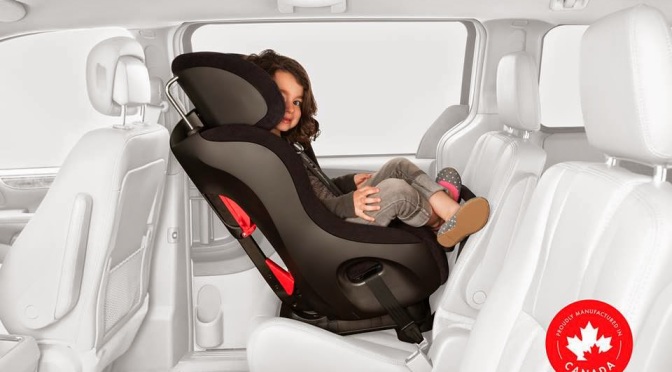
I’ve recently written about 7 reasons to buy a new car seat, and received a number of emails from parents thanking me for the information and asking for more tips about mistakes they were likely making with their car seats.
It’s scary to think about the fact that somewhere between 80 and 90 percent of car seats are not used correctly, especially when we consider the fact that close to 500 children die every year in the United States in car crashes, with a number of them in car seats that were supposed to keep them safe.
We’re not in Sweden, but we can certainly learn from them and apply a number of tips and strategies domestically to keep our children safe. Here’s a list of some of the most common mistakes that you might be making with your car seat, and how to fix them.
5 Big Mistakes You’re Probably Making With Your Car Seat (and How to Fix Them)
1. Your car seat is too loose.
Most parents make a good effort to install their car seats well; they might look at the manual, run the seat belt through the belt path or attach the LATCH anchors, and pull until the belt or anchors feel snug. However, most parents don’t know just how tight an installation needs to be in order for it to do its job. It’s not like wearing an adult seat belt. This is the most common error I see parents making when inspecting car seats. Even a great seat like a Fllo, which is my favorite above-$200 convertible car seat, or the Size4Me 65, my favorite sub-$200 convertible, needs a solid install to keep your child safe.
The danger in this situation is that if you’ve got a loose seat in a collision, your child could slip out of the seat or the seat could come loose entirely, with devastating consequences. For a car seat to do its job, it needs to essentially be a part of the car, in order to benefit from the car’s efforts to slow itself down safely in the event of a collision (see my post on the physics and biology of car crashes for more explanations of what occurs in a crash). How do you tell if your installation is tight enough?
Test your seat by pushing it at the base with your non-dominant hand. The base is either where the belt path is located (where the seat belt runs through the seat) or where the LATCH anchors connect to the vehicle. Push the seat. If you can move it left to right or forward or back by more than an inch, your installation isn’t tight enough.
To fix it, you need to push your car seat down with as much force as necessary to achieve a tight install with either your seat belt or your LATCH anchors. If you have a car made after 1996, you can lock the seat belt simply by pulling it out all the way until you hear the click of the ratcheting mechanism, and then letting it spool back in. You’ll need a locking clip if you have an older car with a non-locking seat belt. The key point, however, is to make sure the installation is tight enough, and this takes weight on the seat.
2. Your harness is too loose.
 Another incredibly common mistake parents make when it comes to car seat installation is leaving too much slack in the child’s harness after buckling him or her into the seat. This is another one of those errors that I see every day with children in car seats, as if you don’t know how tight the harness is really supposed to be, there’s no reason for you to make it that tight, especially if, like most parents, you’re used to having a bit of slack in your adult seat belt if you move back and forth in your seat while driving or while sitting as a passenger.
Another incredibly common mistake parents make when it comes to car seat installation is leaving too much slack in the child’s harness after buckling him or her into the seat. This is another one of those errors that I see every day with children in car seats, as if you don’t know how tight the harness is really supposed to be, there’s no reason for you to make it that tight, especially if, like most parents, you’re used to having a bit of slack in your adult seat belt if you move back and forth in your seat while driving or while sitting as a passenger.
The danger in this situation is that child harnesses don’t work the same way adult seat belts do: if your child is loose in his or her harness, he or she can easily fly out of the car seat in even a mild crash, which can lead to severe or fatal injuries if the child comes into contact with another part of the car or with another passenger. It’s even possible for the child to leave the vehicle completely, which is almost always a fatal outcome.
Test your seat by strapping your child into it and then pinching the harness strap fabric at your child’s shoulder’s between your fingers. If you can actually pinch that fabric once the harness has been tightened, then the harness isn’t tight enough.
To fix it, simply tighten the harness. Depending on the seat, you might need to practice it a few different times until you manage to get all of the slack out, and some seats might have harness straps that only seem to want to stay uneven. Keep trying; it’s important to get all of the slack out every single time.
3. You’re forward-facing too soon.
Yet another mistake I see all-too-frequently among parents is the decision to forward-face their children too soon. The law in most states is that children can’t be turned forward facing until they’re at least 1 or 20 pounds, but this is far too early to do so safely. The AAP’s recommendation of waiting until 2 is better, but that still doesn’t go nearly far enough. A number of parents view the ability to forward-face as a right of passage and as a sign of their children’s maturity and developmental aptitude, but the truth of the matter is that we aren’t doing our children any favors by forward-facing them before we absolutely have to.
The danger in this situation is simply that children’s spinal columns and other bones are still in development, and are still incredibly fragile throughout the first few years of life. When children are placed in rear-facing seats, their backs, which are the strongest parts of their bodies, have a much better chance of sustaining the tremendous forces in a collision than their heads, necks, and spinal cords in a forward-facing seat. If an infant or young child faces forward in a crash, his or her relatively giant head will fly forward in the same collision, which can easily expose the spinal cord and lead to paralysis or death. It can happen in an instant, and it’s completely preventable. There’s a reason the Swedes don’t forward-face until 4: they know it’s safe to stay rear-facing as long as possible.
To fix this, simply rear face as long as possible. To make it easier, look for car seats that allow you to rear-face longer by height or by weight. Seats like the Fllo, Foonf, Rainier, or Rava allow you to rear-face until 50 pounds, which is as good as it gets today in the United States. This, by the way, is one of the best reasons to buy a new car seat; the technology is changing in a good way to enable us to rear-face longer, which saves lives every year.
4. You’re boostering too soon (or abandoning the booster too soon!).
Just as parents are likely to forward-face before they should, a lot parents are all-too-eager to transfer their children into boosters, or forgo the booster seat entirely to place their children in adult seat belts. Both of these mistakes can lead to needless injuries and deaths in children who would otherwise be protected by simply being placed in the appropriate seat.
A lot of parents decide to start boostering because it takes less time to buckle a child or have him or her do the buckling than it does to properly install a harness on a child (see point #2 above). Other parents allow their children to use booster seats or to abandon booster seats entirely because their children ask to do so, or as a reward for their children’s behavior. However, safety should trump convenience when it comes to life and death situations, and a 2-or 3-year old in a booster seat or an 8- or 9-year old in an adult seat belt are examples of unsafe situations that can lead to completely preventable tragedies.
The danger here is similar to the dangers of forward-facing soon. Preschool-and early-elementary-aged children can’t sit still well enough to sit in booster seats safely, as booster seats only provide the lap and shoulder belts to position a child, while a 5-point harness keeps a child perfectly positioned for maximum protection in the event of a collision. A child who has a booster seat belt behind her shoulder, for example, can easily lose an arm or fly out of her booster due to being partially unrestrained in a collision. Similarly, children who don’t fit adult seat belts can face devastating internal injuries when crushed by belts that are improperly sitting over soft internal organs. Alternatively, they can fly out of their belts entirely. It’s not worth it.
To fix this, simply wait until your children are ready to transition. That means no boosters until ideally 8, and no adult seat belts until the 5-step test is passed, which typically isn’t passed until kids are around 10 to 12 years old. It also means looking for seats that work well for extended harnessing and that booster well. Seats like the Frontier G1.1 and Pinnacle G1.1 are the best in the business for both forward-facing and boostering. This again points to the benefit of being willing to consider new car seats.
5. Your car seat has expired.
Finally, while using an expired car seat is just asking for trouble, you’d be shocked at the number of parents who put their children in them every day without thinking twice about this. A big reason for why parents do so is because many don’t know their car seats’ expiration dates, and many more don’t even know that care seats can and do expire.
The danger here is that an expired car seat may not protect your child in a collision the way it would if it had not expired due to it being structurally weaker in ways you can’t see until they fail in a collision. Much like how using old tires can lead to needless fatalities if they blow out while driving on the highway, using expired car seats invites unnecessary risk into your children’s lives.
The fix is to check your car seat, note the expiration date, and replace your car seat before you reach that date. There are plenty of quality new car seats on the market, and you’ll benefit from a number of additional advantages to buying them besides the knowledge that your seat will work at full capacity in a collision.
In conclusion, if you read this list and found yourself making one, more, or all of these mistakes, don’t despair. Just make the change now that you know better. Car accidents kill hundreds of children each year in the United States, and the majority of those deaths are preventable simply by following best practices in car seat use and in driving safety. It’s worth it.
If you find the information on car safety, recommended car seats, and car seat reviews on this car seat blog helpful, you can shop through this Amazon link for any purchases, car seat-related or not. Canadians can shop through this link for Canadian purchases.

